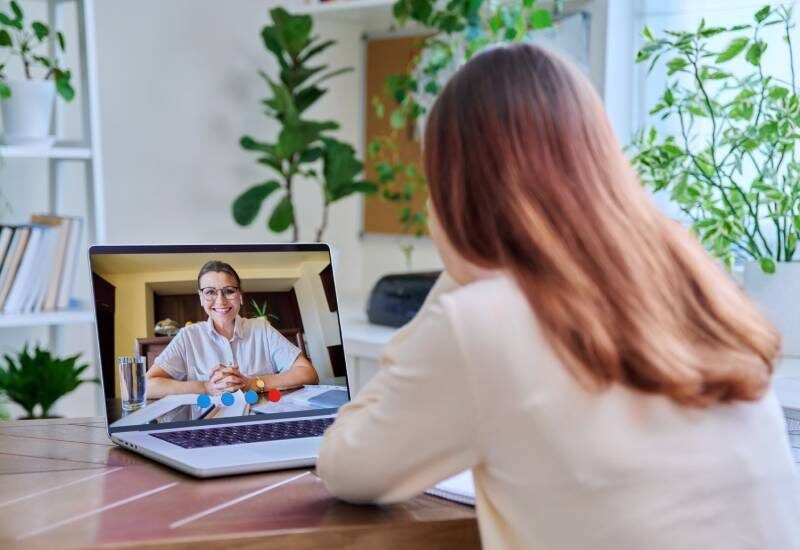Online therapy is a great option for teenagers seeking accessible resources for their mental health. However, some young patients struggle to build rapport with a therapist through digital communication. Knowing how to connect with your online therapist is an important step for successful and effective therapy sessions. Here are a few tips to help break the ice and create a better connection.

Establish a Comfortable and Private Space
The first thing that you should do is set up a comfortable and private space for yourself. The right space can help you feel at ease, deal with fewer distractions, and focus on talking to your therapist. One of the top things to know about online psychiatric services is how much of a difference the right space can make for effective therapy.
It’s a good idea to keep a consistent setup—for example, always sitting in the same chair—to help you create a stable routine. Pay attention to lighting and sound as well; well-lit spaces where your therapist can see you clearly and a good internet connection for uninterrupted communication will improve the overall interaction.
Be Open and Communicative About Your Needs
Many teenagers struggle to open up, but your therapist can’t help you if you aren’t open and honest with what you’re looking for. Try to communicate your expectations, preferences, concerns, and boundaries to your therapist. The more information you give, the better they can help you, so try to clue them in as much as you can to keep things moving.
You should also communicate to your doctor what you’re comfortable with. For example, some patients may not like showing their face on camera, so they ask if they can do audio-only sessions. Being honest about what’s working and what isn’t helps your therapist adjust their approach to better fit your needs. You and your doctor must work as a team to get the most out of your time together.
Make Use of Nonverbal Communication
Another way to connect with your online therapist is understanding how nonverbal communication affects your sessions. Are you making eye contact with the camera? Do you lean in and focus while they’re talking, or are you laying back and not paying attention? Even small actions such as nodding to show that you understand what they said can create a stronger sense of presence and attentiveness during sessions.
Body language and facial expressions are great ways to try and convey things to your therapist if you struggle with verbal communication. Therapists usually pick up on subtle gestures and may try to use this information to make your interactions feel more personal.
Building a connection with your online therapist takes a little adjustment, but with the right approach, it can feel just as supportive and impactful as seeing someone in person. If you’re considering starting therapy or looking to deepen the connection with your current provider, now is a great time to take the first step.
